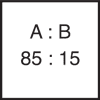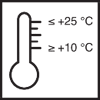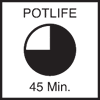Article No. 669617
Top ESD
Aqueous ESD sealant
Product specifications
(DIN EN 51130:2014) R9 (without additive) R10 (with Add 150) R11 (with Add 250)
Component A
Component B
Mixture
* Fire test class in defined systems (see test report on fire classification: Remmers conductive systems).
The stated values represent typical product characteristics and are not to be construed as binding product specifications.
Field of application
- Sealant for moderate loads in conductive or ESD-compliant systems
Properties
- Pigmented
- Dissipative / ESD-compliant
- Volume conductive when used in a system
- Free from solid salts and aqueous salt solutions
- UV stable
- Matt
-
Preparation
-
Substrate requirements
The substrate must be firm, dimensionally stable, capable of bearing loads and free of loose constituents, dust, oil, grease, rubber marks and other substances that could interfere with adhesion.
The substrate must be dry.
The substrate must be coated with conductive or ESD-compliant Remmers systems.
If longer waiting times are necessary on the construction site (> 24 hours), the entire surface must be sanded before the next work step.
-
-
Preparation
-
Combination container
Stir component A until homogeneous immediately before use.
With the stirrer running, add all of component B to component A, then mix both components with a suitable electric stirrer for at least 2-3 minutes until homogeneous.
Pour the mixture into a different container and mix again thoroughly.
If the compound is not mixed properly, specks may form.
With the addition of Add-products, the following also applies to the preparation:
Add the granules to the mixed sealant.
Mix thoroughly with a slow-speed electric mixer
(approx. 300 - 400 rpm).Insufficient mixing is indicated by streaks forming.
-
Application
-
The times given are reduced at higher temperatures and increased at lower temperatures, in particular in combination with high humidity.
-
Working tools / cleaning
-
Epoxy roller, patent disperser, paint strainer
-
Wash tools and any splashed material with water immediately and while wet.
-
Storage / shelf life
-
If stored in the unopened original container and kept cool, dry and protected from frost, the product will keep for at least 3 months.
-
Usage
-
Dependent on application (see application examples)
-
-
Application examples
-
S
Pour the material onto the prepared surface and spread evenly with an epoxy roller, then re-roll with a 50 cm microfibre roller. Replace the rollers every 30 minutes. Always work wet-on-wet.
When using Add-products in the sealer, it must only be applied by Epoxy roller and then re-rolled with a 50 cm microfibre roller.
Make sure that no pools form.
Do not use in direct sunlight.
min. 0.14 kg/m²
-
-
General information
-
Unless otherwise specified, all of the values and application rates given above have been determined under laboratory conditions (20 °C) using standard colours. Slight deviations from these values may arise if the product is worked with on site.
When coating continuous surfaces, only use materials with the same batch number as slight differences in colour, gloss and texture may occur.
Further notes on working, system construction and maintenance of the listed products can be found in the latest Technical Data Sheets and the Remmers system recommendations.
From experience, slightly opaque colours (e.g. yellow, red or orange, etc.) have a varnishing effect. Please consider this when choosing and assembling systems.
Before checking the ESD values, we recommend cleaning the ESD shoes, the electrodes and the floor coating with isopropyl alcohol or ethanol (95%) and waiting until it has evaporated.
Uneven application, strong draughts and large temperature differences on the surface can result in a non-uniform surface appearance due to differences in the degree of gloss.
Suitable for vehicle traffic with rubber tyres; not suitable for vehicle loads with metal or polyamide tyres nor for dynamic point loads.
Upon prolonged contact with a floor covering, coloured – and especially black – rubber can cause discolouration that cannot be removed (e.g. car tyres or machine bases). Suitable polyurethane wheels or underlay mats should be used in order to avoid such discolouration. Colourants, hair dyes, bleach and disinfectants can also cause discolouration if not removed immediately.
Further notes on working, system construction and maintenance of the listed products can be found in the latest Technical Data Sheets and the Remmers system recommendations.
To reduce the susceptibility to dirt and to increase the lifespan, we generally recommend carrying out initial conductive treatment twice. This significantly improves the cleanability.
-
-
Disposal instructions
-
Larger quantities of leftover product should be disposed of in the original containers in accordance with the applicable regulations. Completely empty, clean containers should be recycled. Do not dispose of together with household waste. Do not allow to enter the sewage system. Do not empty into drains.
-









